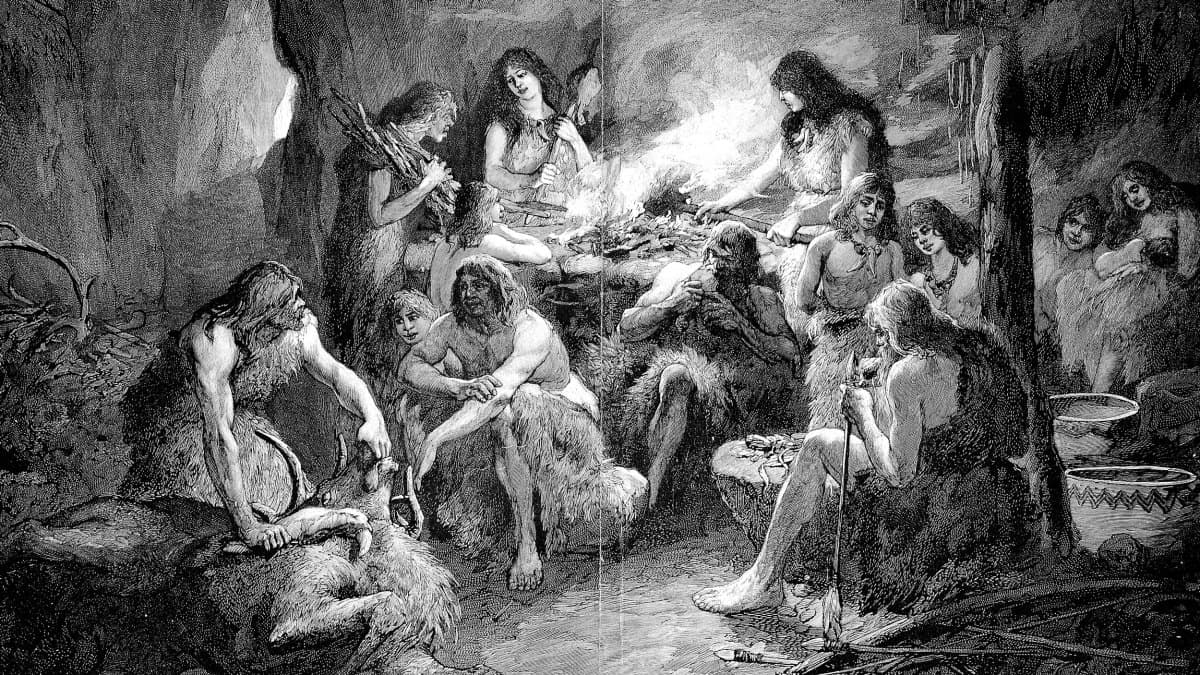There is a lot that we know about the first people on Earth. Most commonly referred to as Neanderthals, these early humans lived on our planet up until roughly 40,000 years ago. They went extinct for a variety of reasons. Researchers have been fascinated by the origins of the human race for centuries.
Although there is plenty of information out there about Neanderthals and prehistoric people, many believe in the numerous stereotypes out there about the earliest humans. Movies like Encino Man and Year One would have you believe that all cavemen were dumb brutes who spoke in guttural grunts and used simple tools. In reality, the earliest humans were intelligent, cultured, and responsible for many advancements. To learn more about the Neanderthals and prehistoric peoples as well as debunk several myths about them, keep reading!
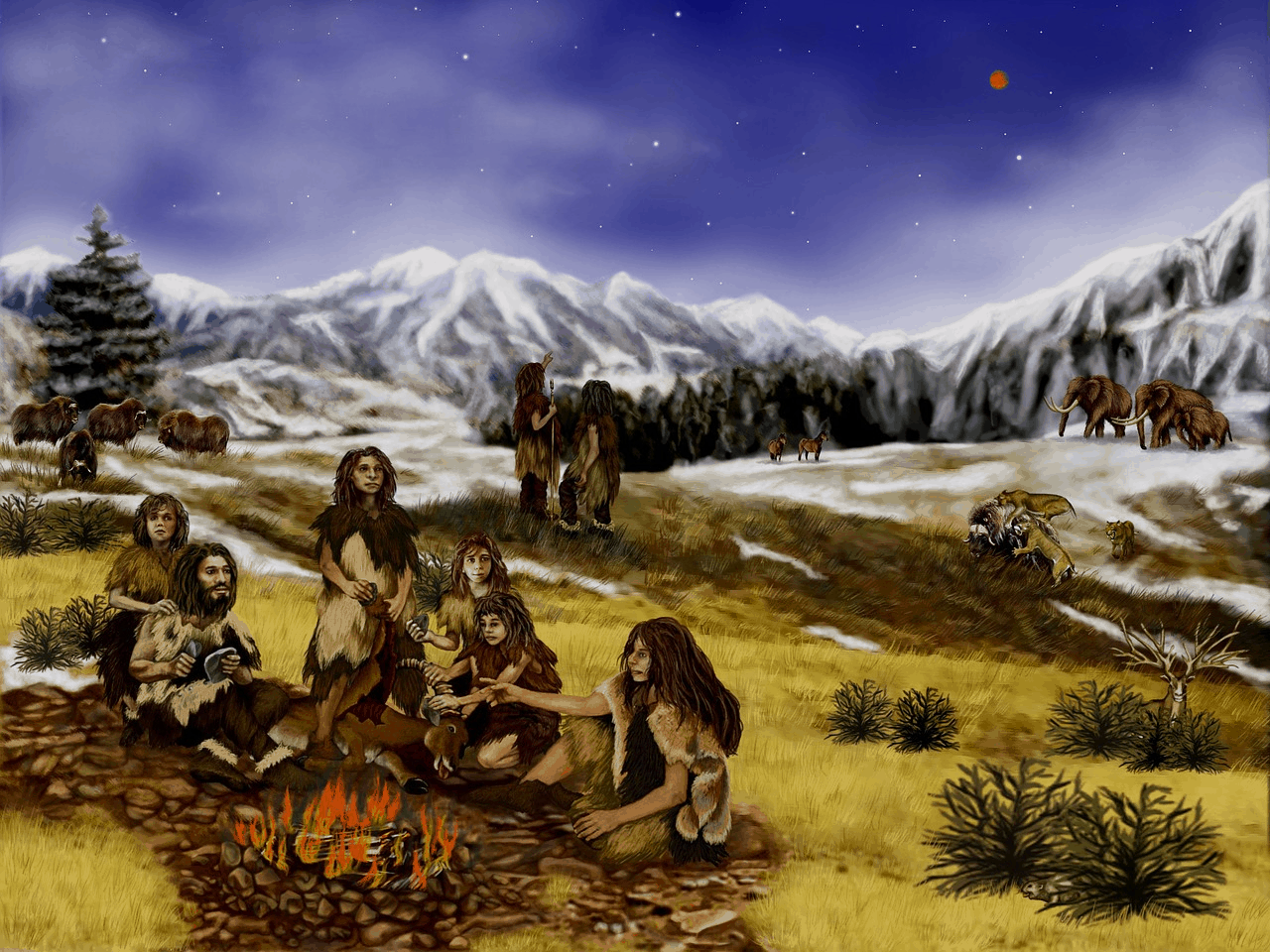
The Neanderthals
Neanderthals lived on the continent once known as Eurasia more than 40,000 years ago. This now-extinct species of archaic humans went extinct because of disease, climate change, and competition, and extermination from other immigrating humans. Although many people believe that we descended directly from humans, that is not the case.
Neanderthal DNA split from humans between 182,000 and 800,000 years ago. The oldest known Neanderthal bones that have been discovered are estimated to be roughly 430,000 years old. The earliest humans were built quite differently than modern humans. They had shorter limbs, a stockier build, a more massive chest as well as a more prominent nose. Experts believe the Neanderthals were built this way so they would have an easier time staying warm during the freezing winter temperatures.
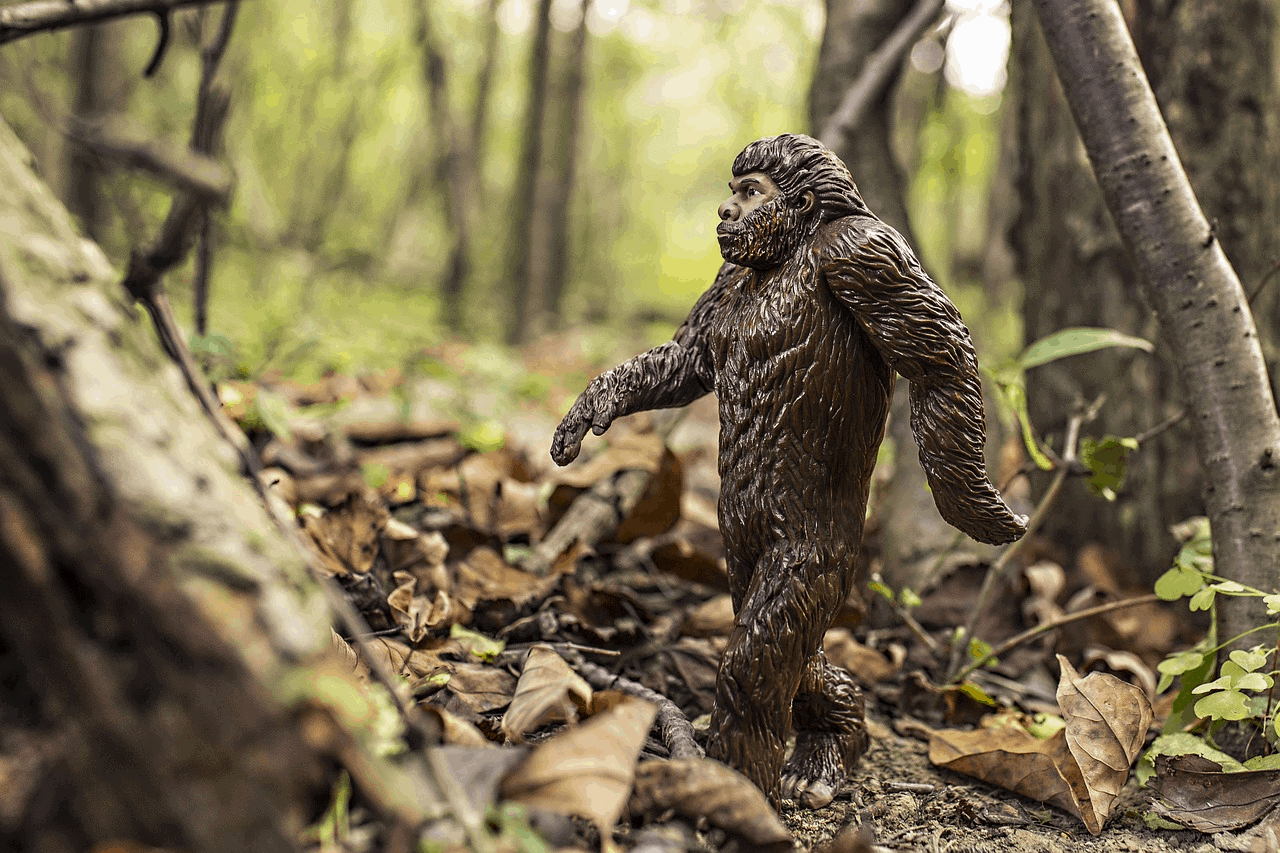
Research History
Dutch naturalist Philippe-Charles Schmerling discovered the first Neanderthal remains in 1829. They were recovered during an expedition into the Schermling Caves in Belgium. Schmerling initially believed the skull he found was just ancient human remains.
By the turn of the 20th century, several other Neanderthal bones had been recovered, paving the way for the Neanderthals to be classified as their own species. In the early 1900s, experts related the Neanderthals to ape-like creatures and claimed they were only slightly related to humans. That was when the idea that Neanderthals were slouching barbarians came to be. Earlier science fiction works grabbed onto this image of Neanderthals and depicted cavemen as monsters.

Classification and Evolution
Neanderthals belong to the Homo genus along with humans and chimpanzees. Another species listed in the Homo genus is Denisovan, which is another extinct species of archaic humans. Experts believe that Neanderthals are more closely related to Denisovans than modern humans based on their nuclear DNA.
Most researchers believe that the last common ancestor of modern humans, Neanderthals, and Denisovans is H. heidelbergensis which lived in Southern Africa, East Africa, and Europe. Experts have determined that H. heidelbergensis broke away from Neanderthals due to a glaciation period. Because of that, their bodies quickly grew in size and robustness. Also, their heads became much larger.

Truth About Where They Roamed
The earliest Neanderthals who lived more than 130,000 years ago were mostly discovered in places in Europe. Later species were found in Central, Western, Mediterranean, and Eastern Europe. Researchers also found Neanderthal fossils in Southwest, Northern, and Central Asia.
It’s hard to tell just how much the rapid climate fluctuations affected the Neanderthals. Warmer periods were good because they encouraged the growth of food and forest. It is believed that the Neanderthals thrived in forested landscapes more than in frosty areas and temperatures. Experts state that retreating ice would allow the Neanderthals’ range to expand and contract depending on the weather.

The Neanderthal Population
The Neanderthals are believed to have descended from a very tiny population. Much like modern humans, the size of the population of people who could bear children was approximately 3,000 to 12,000 people. By living in small, inbred groups, the Neanderthals were able to maintain their small population.
The Neanderthal population is believed to have been roughly ten times smaller than modern human populations in Western Europe. Because of that, the Neanderthals were stuck in a bit of a trap. Their small population meant that innovation would not occur in a timely manner. That would then lead to the population remaining small. That is why the Neanderthal species went stagnant.
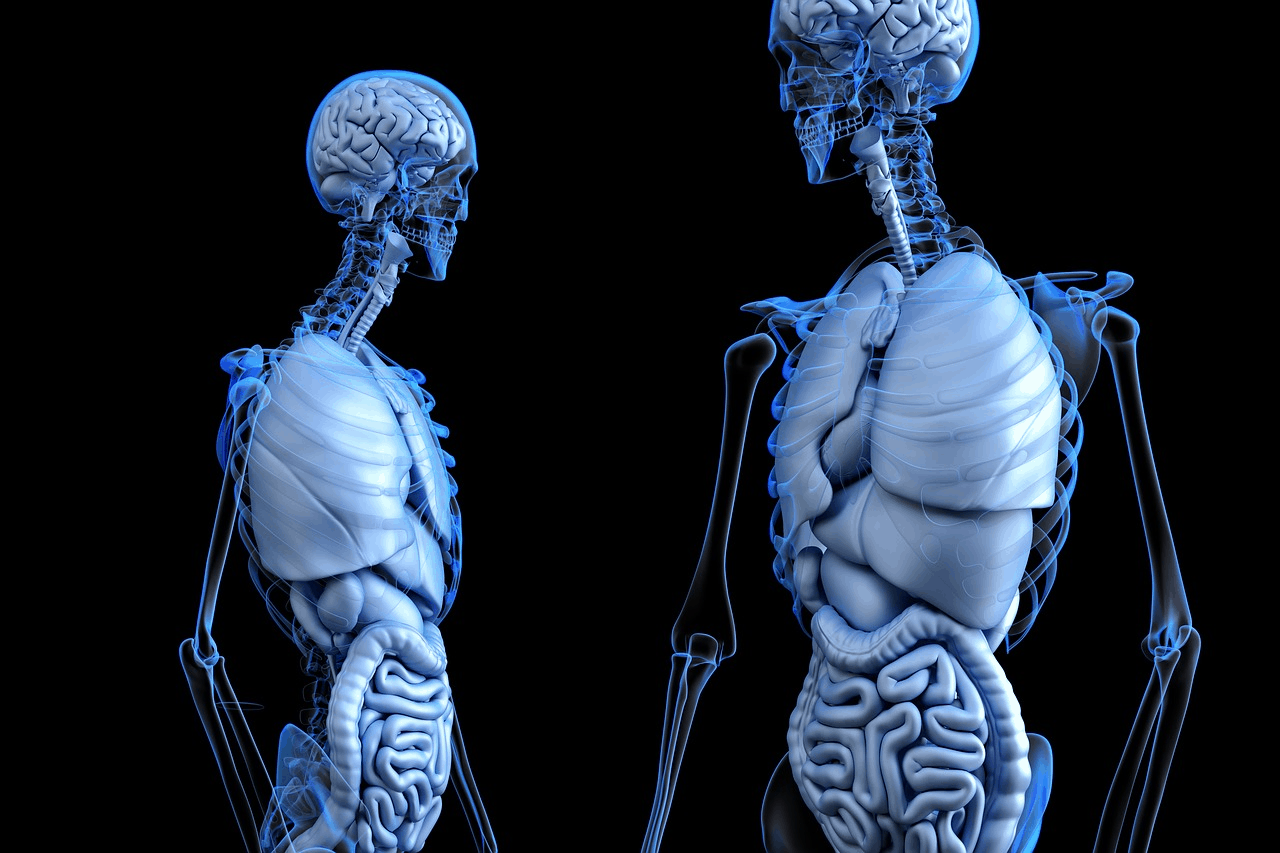
Facts About Their Anatomy
Compared to modern humans, Neanderthals were much stockier. They were also stronger but were able to maintain an upright posture. Neanderthals had full, barrel-shaped rib cages and broader pelvises. Their arms and legs were also shorter in relation to their body shape.
After examining Neanderthal long bones, researchers determined that male Neanderthals had an average height of 5.5 to 5.6 feet, while female Neanderthals were 5. to 5.1 feet tall on average. Male Neanderthals were roughly 171 pounds, and female Neanderthals were around 146 pounds. The body mass index for Neanderthal men falls into the human range for obesity, leading researchers to determine just how stocky they were.

The Actual Facial Traits of Neanderthals
The first thing you may notice about Neanderthal is that they have huge nose. It sits higher on the face than a modern human’s nose does. Neanderthals also have smaller chins and sloping foreheads.
Their skull is elongated and less round than a modern human. There is also a protrusion on the back of their head, known as the occipital bun. This is caused by the temporal bones and cranial base of the skull being placed higher and more frontally on the skull. The Neanderthals had more massive jaws, which are thought to have adapted to fit larger teeth and stand up better to abrasion.

The Truth About the Neanderthal’s Brain
Based on Neanderthal stereotypes, you may think that Neanderthals have tiny brains. However, that is not the case. The average braincase for a Neanderthal man is 98 cubic inches, and for a Neanderthal woman is 79 cubic inches. To compare, a modern man has a braincase of 78 cubic inches, and a modern woman’s braincase is 69 cubic inches.
Neanderthals had a larger occipital lobe, which controls a person’s vision. This, along with their giant eyes, was an adaptation to help Neanderthals see better in lower light conditions. They also had more brain tissue that controlled bodily maintenance and control. The cognitive areas of the brain that control memory and language are much smaller in Neanderthals compared to modern humans.

Neanderthal’s Hair and Skin Color
In the areas where Neanderthals thrived, there was not much sunlight. Because of that, most Neanderthals had lighter skin. Neanderthals had a gene known as BNC2 that is commonly associated with lighter skin tones.
There are records of Neanderthals from places like Croatia who had darker skin, hair, and eye colors than people currently living in modern Europe. It is worth noting that modern Europeans did not develop light skin and hair until the Holocene period, which began roughly 11,650 years ago. A Neanderthal was discovered in Italy that showed genes associated with blonde or red hair.

Truth About Their Metabolism
Even though Neanderthals were stocky, they were extremely active. Their average physical activity level was around 650 counts per minute per day. Compared to the modern human average of 200 counts per minute per day, that’s a lot of activity.
The average body fat percentage in Neanderthals was 25 percent. In Neanderthal men living in a more temperate climate, it could have been around 13 percent and for women, 20 percent. With these numbers, experts believed that Neanderthal men burned around 4,000 calories per day, and Neanderthal women burned around 3,500. The maximum lifespan, beginning of adulthood, menopause, and gestation, were very close to what we experience as modern humans.

Facts About Their Pathology
Neanderthals experienced a lot of traumatic injuries. Close to 94 percent of discovered Neanderthal specimens showed evidence of significant trauma that had healed. Fifty-two percent of those were severely injured, and nearly 20 percent of the injuries happened before the Neanderthals reached adulthood. Sadly, more than 80 percent of them died because of their injuries before turning 40 years old.
Because of this evidence, experts believe that Neanderthals had a risky hunting routine that enabled them to get hurt often. Some specimens were thought to have lived to be 60 to 70 years old. These fossils showed signs of spinal disease and osteoarthritis. Other specimens showed congenital disabilities primarily due to inbreeding.

Real Neanderthal Culture
Neanderthals are known for working best in groups. They lived in small, tight-knit groups that were sparse compared to other ancient humans. Evidence of Neanderthal groups points to one that had seven adults, three teenagers, two children, and one infant.
In order to increase birth spacing, Neanderthal children were weaned after the age of 5. It is thought that children were put to work after being weaned due to evidence of ailments related to high stress like stunted growth. Once a child reached adolescence, they were most likely ordered to join the group in hunting large game. A thriving population would consist of between 8 and 50 other small groups who interacted together.

They Actually Had Social Hierarchy
Because they lived in small groups and hunted big game, the Neanderthals did not divide up tasks based on a person’s gender. Men, women, and even children were tasked with hunting. This was a less efficient form of collecting food compared to having the men hunt and the women and children foraging.
Evidence shows that Neanderthals commonly carried items with their teeth. Men had more wear on their upper teeth, and women had more wear on their lower teeth, suggesting there were some cultural differences in their tasks. Because some Neanderthals were discovered with decorative clothing and jewelry, researchers believe they could have had an elevated ranking in their group.

Truth About Neanderthal Hunting and Gathering
It is commonly known that Neanderthals were apex predators. They sat on the top of the food chain and had no natural predators that hunted them. Neanderthals mostly hunted red deer and reindeer as they were the most plentiful food source at the time.
Research shows that Neanderthals also hunted aurochs, wild boar, ibex, and occasionally mammoths, straight-tusked elephants, and wooly rhinoceroses. Neanderthal bone analyses show that almost 100 percent of the Neanderthals’ protein needs were met with animal meat. It is thought that they were fans of ambush hunting. They would get close to their target and attack them with a short burst of speed and thrust of their spears.

Facts About Their Food Preparation
Neanderthals were quite creative and cooked their meat in a variety of ways. One of their favorite ways to cook fresh meat was by roasting it. They also used it to make stews, soups, and animal stocks.
Through the discovery of animal bone fragments at Neanderthal settlements, experts have determined that the Neanderthals made fat stock by boiling bone marrow from animals that possibly died of starvation. This was a great way to keep them full of protein and energy since they ate a diet deficient in carbohydrates. In some areas, Neanderthals used individual plants like chamomile to flavor their meat. They also smoked their meat occasionally.

Real Competition to the Neanderthal Population
The Neanderthals had quite a bit of competition from other predators. Their main competitors were cave bears, wolves, and cave lions. Because the pressure from these animals was extremely high, the Neanderthals hunted them to some extent. Because these animals were ferocious, most of the time, the Neanderthals would yell at them and throw stones to get them to run away. In some cases, they had to abandon a kill because of those animals.
One animal that the Neanderthals coexisted with was the cave hyenas. They tended to hunt different species. Also, cave hyenas hunted younger weaker animals, while Neanderthals preferred prime specimens. Even though they didn’t compete, cave hyenas did steal food from the Neanderthals and most likely scavenged on their dead bodies.
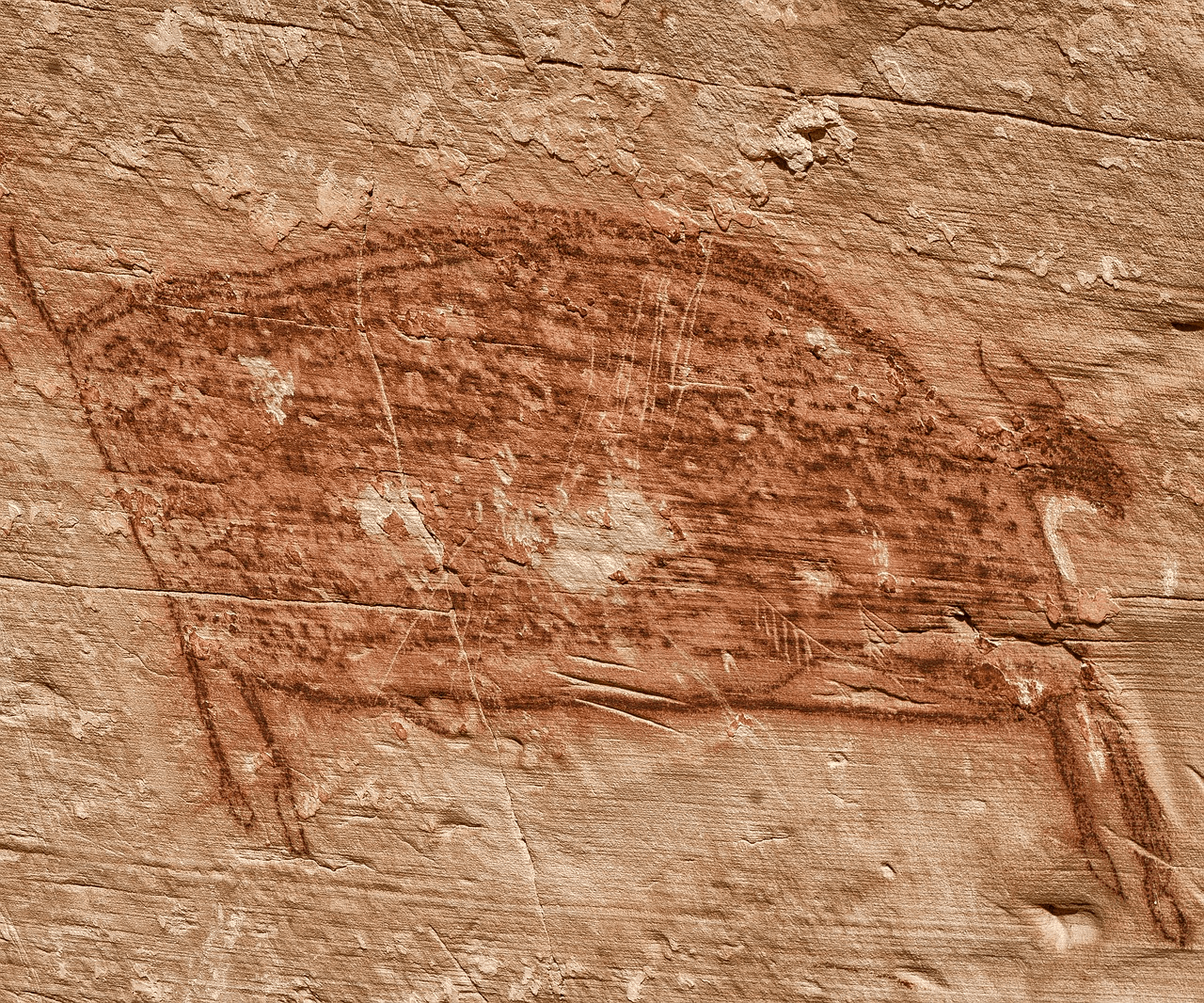
Truth About Neanderthal Art
When you think of cave dwellers, you probably think of cave art. The Neanderthals created plenty of remarkable art, including sculptures, cave drawings, and even jewelry. A Neanderthal gravesite was found with evidence of pollen used in a flower burial. An eagle claw with carvings in it was found in a Neanderthal site and was believed to have been worn as jewelry.
Other evidence was found of the Neanderthals wearing bird feathers as decorations. Scratches on a cave floor have been interpreted as abstract art created by Neanderthals. Recently, seashell beads and pigments used for jewelry were discovered in southeastern Spain.

Actual Neanderthal Technology
Although you may not realize it, the Neanderthals were quite technologically advanced for their time period. That’s not to say that they created many groundbreaking ideas, mainly due to the fact that the high amount of devastating injuries would prevent an expert to teach a novice how to use a tool properly.
Neanderthals were best known for making stone tools in the Mousterian style. They developed skills to make a useful cutting surface with a small number of raw materials. This method was not easy to learn, and experts believe the Neanderthals taught it from generation to generation. The Neanderthals were also skilled at making fire, and many of their caves were found with evidence of hearths.
Neanderthal Myths Debunked

Myth: Neanderthal Tools Were Simple
More than a decade ago, archaeologists believed that the Neanderthals used straightforward tools like sharpened stones. In the past decade, that myth has been debunked. In the Middle Rhone Valley in France, researchers discovered Levallois flakes, which are a part of Neanderthal stone tool technology.
They also found twisted fiber strands that could have been used as cordage. Another item found in France was six lithic points that could potentially be related to projectile technology. This tech is most commonly associated with the earliest modern humans. A Dutch study found that the Neanderthals passed on some of their tool-making skills to humans. They discovered 50,000-year-old tools made from deer bones. Leather workers still use these types of tools in modern times.

Myth: Neanderthals Did Not Bury The Dead
Those that see Neanderthals as primitive cavemen would believe that they would not due much to honor their lost people. That is absolutely not the case. Quite a few Neanderthal burials have been discovered in recent years.
A cave in La Chapelle-aux Saints, France displayed a 50,000-year-old Neanderthal skeleton that was delicately placed in its grave and was well protected from scavengers. Another notable Neanderthal burial was a child discovered in 1961 at the Roc de Marsal in France. The 70,000-year-old remains were placed on their stomach with bent legs and a hand on its head. It’s further proof that the Neanderthals had the capability of developing rituals.

Myth: Neanderthals Used Animal-Like Sounds to Communicate
For many years, it was believed that Neanderthals did not have the mental capacity or vocal ability to have speech. Experts thought they communicated by grunting. Research from the past few years has found that the Neanderthals communicated with each other in a type of language that is quite similar to how we speak today.
This was discovered through a 3D X-ray that was taken of a Neanderthal hyoid bone that was dated to be approximately 60,000 years old. The hyoid bone is located in the upper part of the neck above the larynx. It’s an essential foundation of human speech. The larynx has been found to exist only in modern humans and Neanderthals.
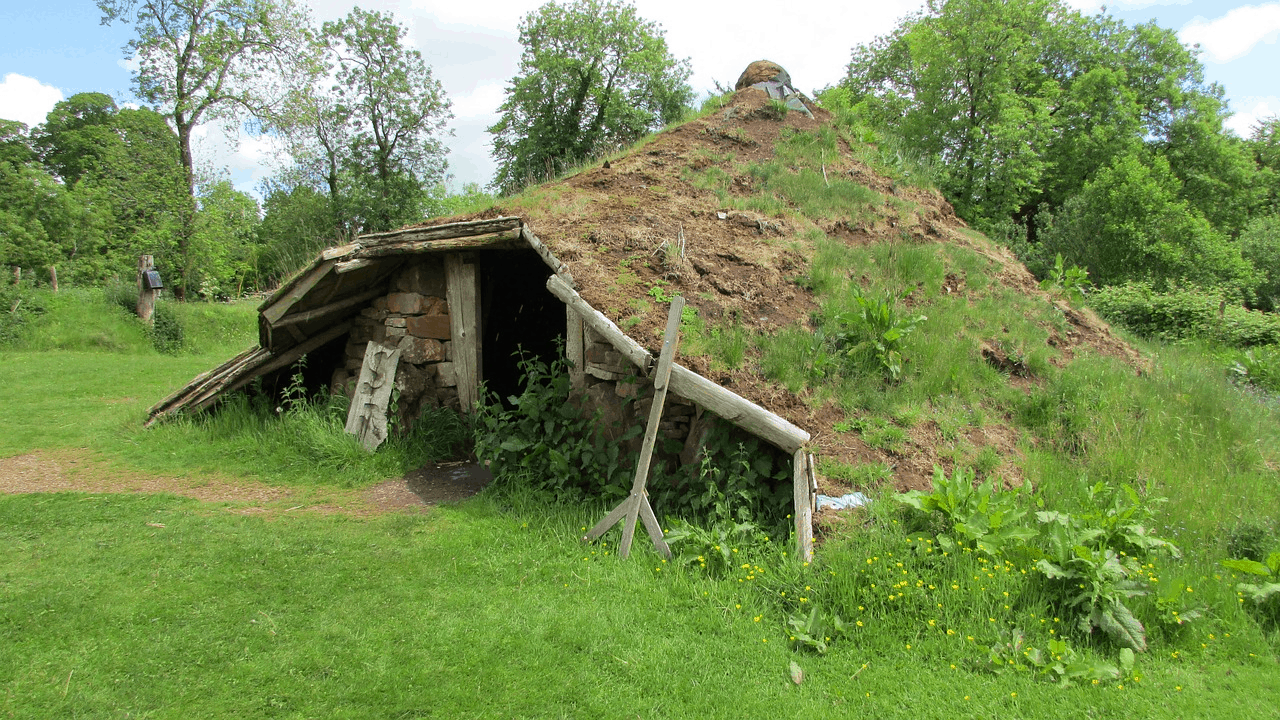
Myth: Neanderthals Did Not Construct Homes
It was long believed that humans were the only species to utilize and organized space. The Neanderthals were thought to have roamed from place to place and not set up roots anywhere. In 2013, a collapsed rock shelter was discovered in Italy that gave insight into how the Neanderthals kept their homes.
The shelter in Italy was a neat, tidy home with distinct spaces for different purposes. There was an area for sleeping, one for cooking, a place for socializing, and another for making tools. It’s more evidence that the Neanderthals weren’t that different from us. Because stone tools and animal bones were found near the front of the cave, it seems that tool production occurred there because of the concentration of sunlight.

Myth: Neanderthals Only Ate Raw Meat
You’ve probably seen TV shows and movies where the Neanderthals are uncivilized ape-like creatures who feast on raw meat. However, that’s not realistic. As we’ve mentioned before, the Neanderthals had several methods for cooking the meat they hunted for.
Evidence has even been found that the Neanderthals ate more than meat. They ate vegetables and other plant matters. The Neanderthals even used herbs to flavor their food. Some researchers believe that evidence of plants found in Neanderthal teeth is because they liked to eat the stomach contents of the animals they killed. While this theory is plausible, it has yet to be proven.

Myth: Neanderthals Had No Culture
It’s commonly assumed that because the Neanderthals were early people, they were not sophisticated individuals. For the time period, they were quite advanced. The Neanderthals were an artistic species, with detailed art discovered in several places around the world.
Rock art has been found in a cave in Spain that dates back over 40,000 years, and experts believe it can be attributed to the Neanderthals. Also, evidence shows that they were a musical species. The oldest instrument to be uncovered is a flute that was found in a cave in Slovenia. It dates back more than 60,000 years, meaning it was played by the Neanderthals.

Myth: Neanderthals Were Bad Parents
For those who view Neanderthals as being rough brutes, it’s easy to believe that they were not good at parenting. You may think that because they were a brash species, they were not good at being compassionate and empathetic toward their offspring. Evidence shows that this is not the case.
Experts have found that there was much emotional development in Neanderthal children. They developed strong bonds with their inner circle. Neanderthal adults also cared deeply for children, taking care of sick children for years. Children were also instrumental in symbolic expression throughout Neanderthal social groups. Evidence of burials shows that Neanderthal children were given more elaborate burials than those adult Neanderthals.

Myth: Neanderthals Could Not Show Care or Empathy
Many people think that Neanderthals only cared about themselves. They put their needs before anyone else’s and did not take the time to care for others. Evidence shows that this is not the case in the slightest.
The Neanderthals were dedicated to caring for the old and sick individuals in their communities. In France in 1908, a 56,000-year-old Neanderthal skeleton was found. When the man died, he was relatively old and had lost most of his teeth. His remains indicate that he must have had help grinding down his food so he could eat it. Additionally, his bones showed signs of arthritis and breaks, meaning other members of his group would have had to help him move around.

Myth: Neanderthals and Humans Never Interbred
For a long period of time, researchers were under the impression that the Neanderthals went completely extinct before the Homo sapiens came into existence. Recent archaeological evidence suggests otherwise. There was a period of about several thousand years when both Neanderthals and humans lived on planet Earth at the same time.
It was assumed that it was biologically impossible for humans and Neanderthals to interbreed. Now, scientists have analyzed ancient DNA and found that interbreeding between Neanderthals and humans did occur. It seems that roughly 20 percent of modern humans have a percentage of Neanderthal DNA.
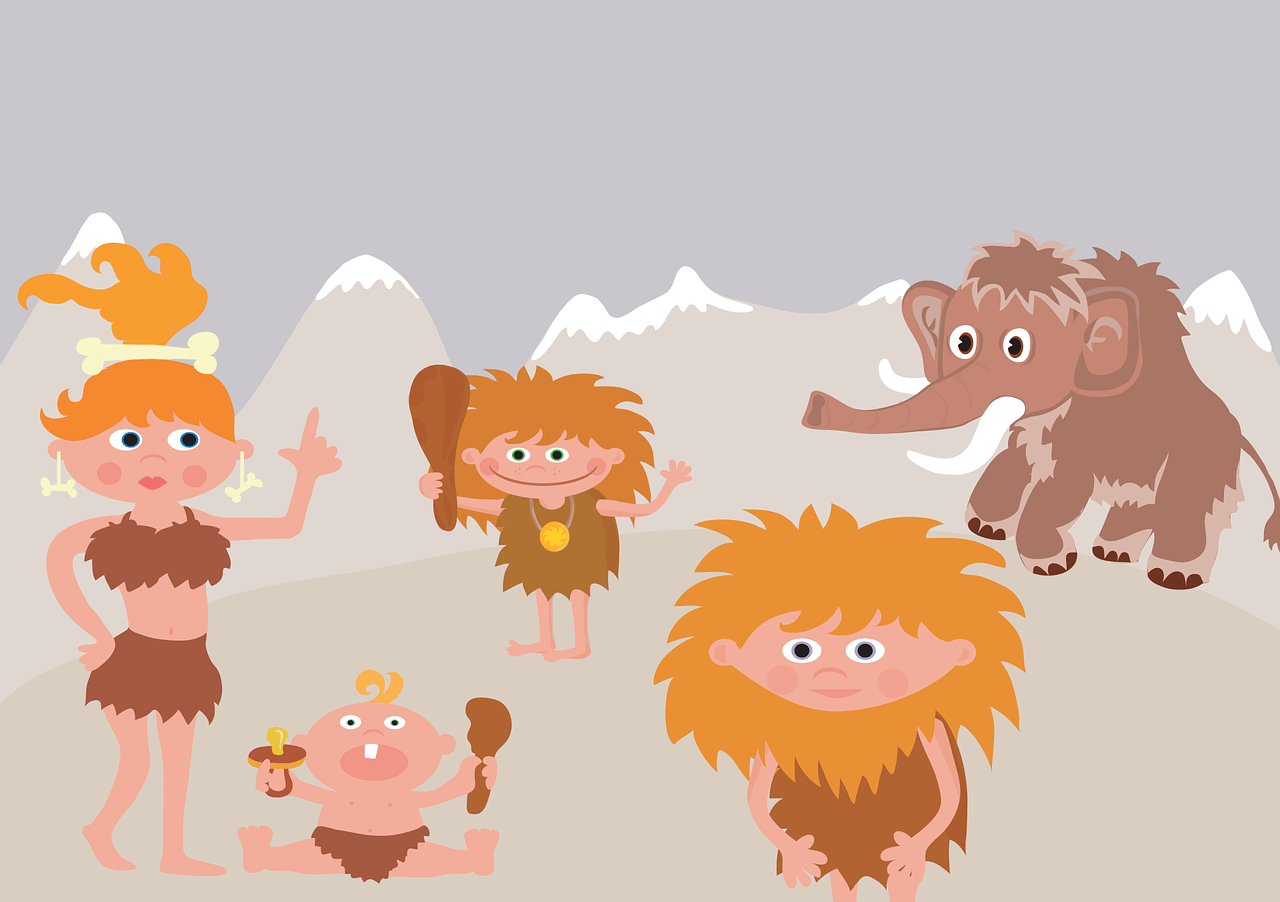
Myth: Humans are Direct Descendants of Neanderthals
It would seem that most people believe that the Neanderthals existed on Earth way before humans came to be. For a long time, experts thought that humans evolved directly from the Neanderthals. As we discussed before, they coexisted for thousands of years. The Neanderthals and Home sapiens were two distinct groups that lived side by side.
Studies of ancient DNA have uncovered that the Neanderthals originated from a unique evolutionary line. Because of that, they are known as distant cousins to modern humans. Interbreeding did occur between the Neanderthals and Home sapiens. The descendants that resulted from their interbreeding are contributors to modern humans.

Myth: Neanderthals Were Prone to Head Injuries
Evidence of a Neanderthal who experienced serious injury dates back to 1856. Neanderthal bones showed an old elbow injury that was a fracture that had been healed. Since then, nearly every Neanderthal skeleton that has been discovered has displayed at least some physical trauma.
Many Neanderthal skeletons have shown signs of injury around the head and neck. Several years ago, researchers claimed that the frequency of these injuries would make Neanderthals akin to modern rodeo cowboys. In recent years, evidence of these types of injuries in Pleistocene humans that lived during the same time as the Neanderthals has been found. This suggests that the Neanderthals were not prone to head and neck trauma.

Myth: Neanderthals Were Less Intelligent
The standard way of thinking has been that the Neanderthals were a primitive species that did not have a lot of cognitive abilities. For more than 60 years, archaeologists have thought that Homo sapiens were much more intelligent and advanced than the Neanderthals. That is actually not true.
As we discussed before, the Neanderthals and Homo sapiens had an overlap of several thousands of years where they coexisted on Earth. Evidence has been discovered to suggest that the stone tools that have been attributed to Homo sapiens are in no way more efficient than the tools created by the Neanderthals. Also, many of the tools that the Neanderthals used frequently were also used by Homo sapiens.

Myth: Neanderthals Were Big
When you think of an NFL linebacker, you picture a large, muscular man. Quite a few people see Neanderthals having the same stature. Nevertheless, as we’ve discovered, that’s not how the Neanderthals were built.
As hunter-gatherers, the Neanderthal men weighed on average 176 pounds and were about 5 feet 6 inches tall. A typical linebacker weighs nearly 250 pounds and stands tall at 6 feet 2 inches. A Neanderthal man’s protein-rich diet may give them additional muscle mass, but it would not be enough to make them large, intimidating figures. However, that doesn’t mean the Neanderthals weren’t built well enough to be agile hunters.

Myth: Neanderthals Had Poor Coordination
As we’ve covered before, the Neanderthals were a species that frequently got hurt. Evidence is displayed in nearly every Neanderthal skeleton that has been discovered. From broken bones to skull fractures, the Neanderthals were a resilient species.
Although injuries happened frequently, that does not indicate that the Neanderthals had poor coordination. They were able to hunt large animals like reindeer and bison with just spears. The Neanderthals used a method of hunting that involved sneaking up on prey and ambushing them. If the Neanderthals had poor coordination, they would not have been nearly as successful at hunting and gathering food.
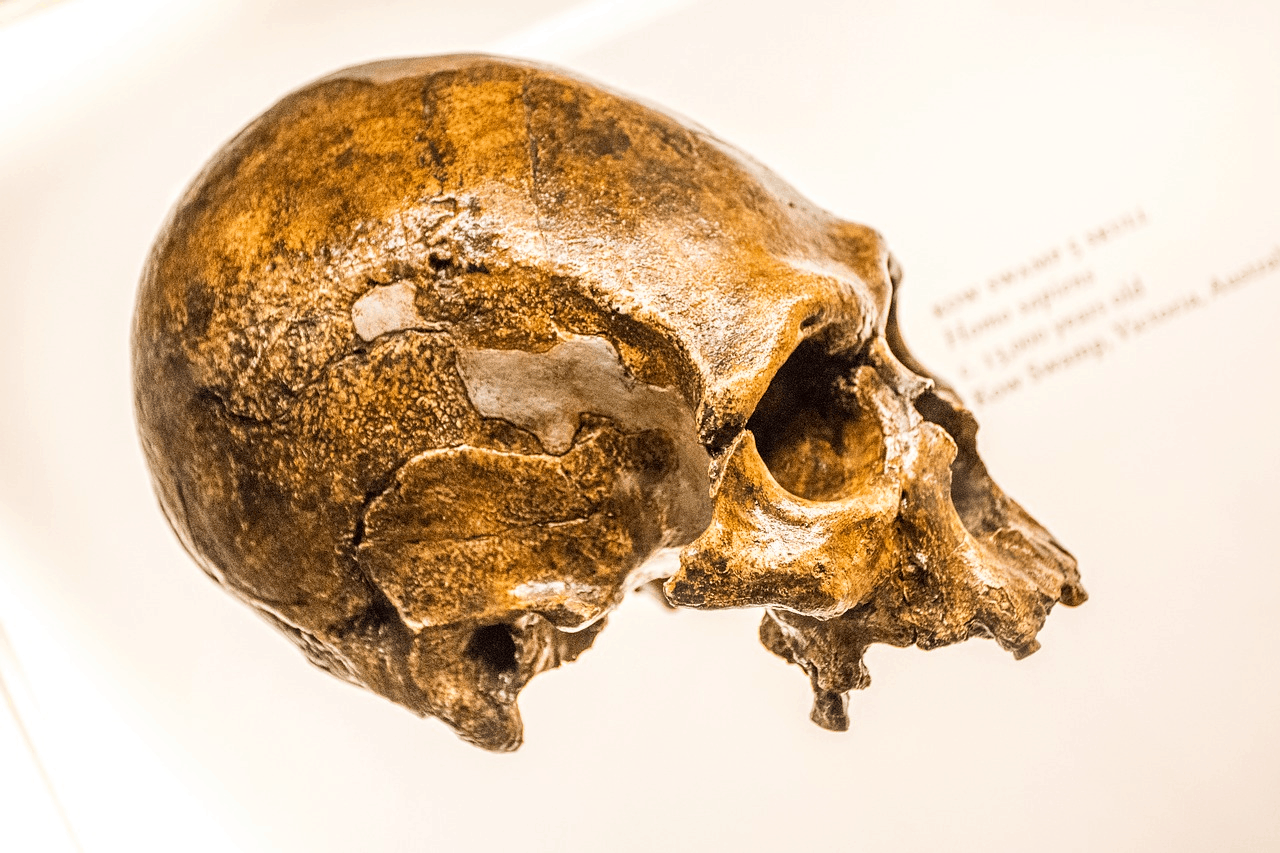
Myth: Neanderthals and Humans Had Similar Cognitive Abilities
The common consensus about the intelligence level of Neanderthals is that they were not smart people. Neanderthals were smart for the time period and were quite innovative. They displayed several behaviors that could be considered average in terms of cognitive abilities.
That doesn’t mean the Neanderthals were as advanced as modern humans. There were some overlaps in behaviors, but you probably wouldn’t be able to have a Neanderthal man and a modern human have much in common. The language would be different, as would the ability to process information. Even in the Upper Paleolithic era, Europeans would have different cognitive abilities than the Neanderthals.

Myth: Neanderthals Could Not Integrate into Modern Society
If you think about a Neanderthal entering the present day, you might think it fits into the plot of a movie. In fact, there was a movie made with this exact plot back in the early 90s. Called Encino Man, the movie followed two high school boys who unearthed a caveman and showed him how to live in their world.
Although the caveman could not speak, he quickly learned how to navigate the world as well as process emotions. He ended up being more popular than his modern-day friends. The same type of situation would most likely occur if a Neanderthal were alive today. Since Neanderthals had a wide range of cognitive abilities, there are most likely people on Earth today with similar talents.

Myth: Neanderthals Would Excel in the Modern Olympics
The conventional view of the Neanderthals is that they were giant, hulking creatures who had superhuman strength. Their diet rich in meat and protein would enable them to conquer any competitors with their brute strength. Does this mean that they could crush the competition in the modern-day Olympics?
The answer is no. While the Neanderthals were strong, they didn’t have the mass and body proportions to become world-class weightlifters or agility masters. Their diet was mostly meat-based, so they would not have consumed the necessary vitamins and nutrients needed to build adequate muscle strength for competitive sports and weightlifting. Their bones would also not have been distributed in a way to make weightlifting possible.

Myth: Neanderthals Hunted Alone
As we’ve discussed before, the Neanderthals found strength in numbers. They hunted big games using hand-crafted spears. While many people have thought that the Neanderthals worked alone, that was not the case.
The Neanderthals hunted large animals like deer, wild horses, auroch bulls, straight-tusked elephants, woolly rhinoceroses, and mammoths. They had to compete against other hunters like lions and bears. It wasn’t uncommon for the Neanderthals to be killed by their animal competitors. Because of that, the Neanderthals needed to work in groups to keep themselves protected. By having each other’s back, they could stay safe and efficiently hunt their prey.

Myth: Neanderthals Were Evolutionary Failures
The thought process behind this myth is simple. If the Neanderthals were so highly skilled, why did they go extinct? They had the ability to communicate, fashion tools, perform rituals, and establish their own culture. What kept them from being a species for only several thousand years?
Archaeologists view the Neanderthals as a successful species because of how they lived. They were able to survive in environments that were, at times, hostile and continually changing. The Neanderthals withstood harsher climates than any primates, and most humans have ever experienced. This species also had greater dexterity than their ancestors as they were able to touch their index finger and thumb. Additionally, they had the strength to handle constant injuries and immobilizing occurrences.

Myth: Neanderthals Were Hunchbacked
The earliest discoveries of Neanderthal bones led archaeologists to believe that the species had bent backs. Fossilized bones that were found initially displayed signs of rickets because they were so misshapen, or so researchers thought. These bones were attributed to the Neanderthals.
A Neanderthal skeleton that was found in 1908 appeared to be bent over in a permanent slouch. Because of that, the archaeologist who discovered it assumed that Neanderthals were the missing link between primates, who walked on all fours, and humans, who walk standing upright. In fact, the skeleton that was found ended up being from a man who had extreme arthritis. Later specimens confirm that the Neanderthals walked upright as we do.
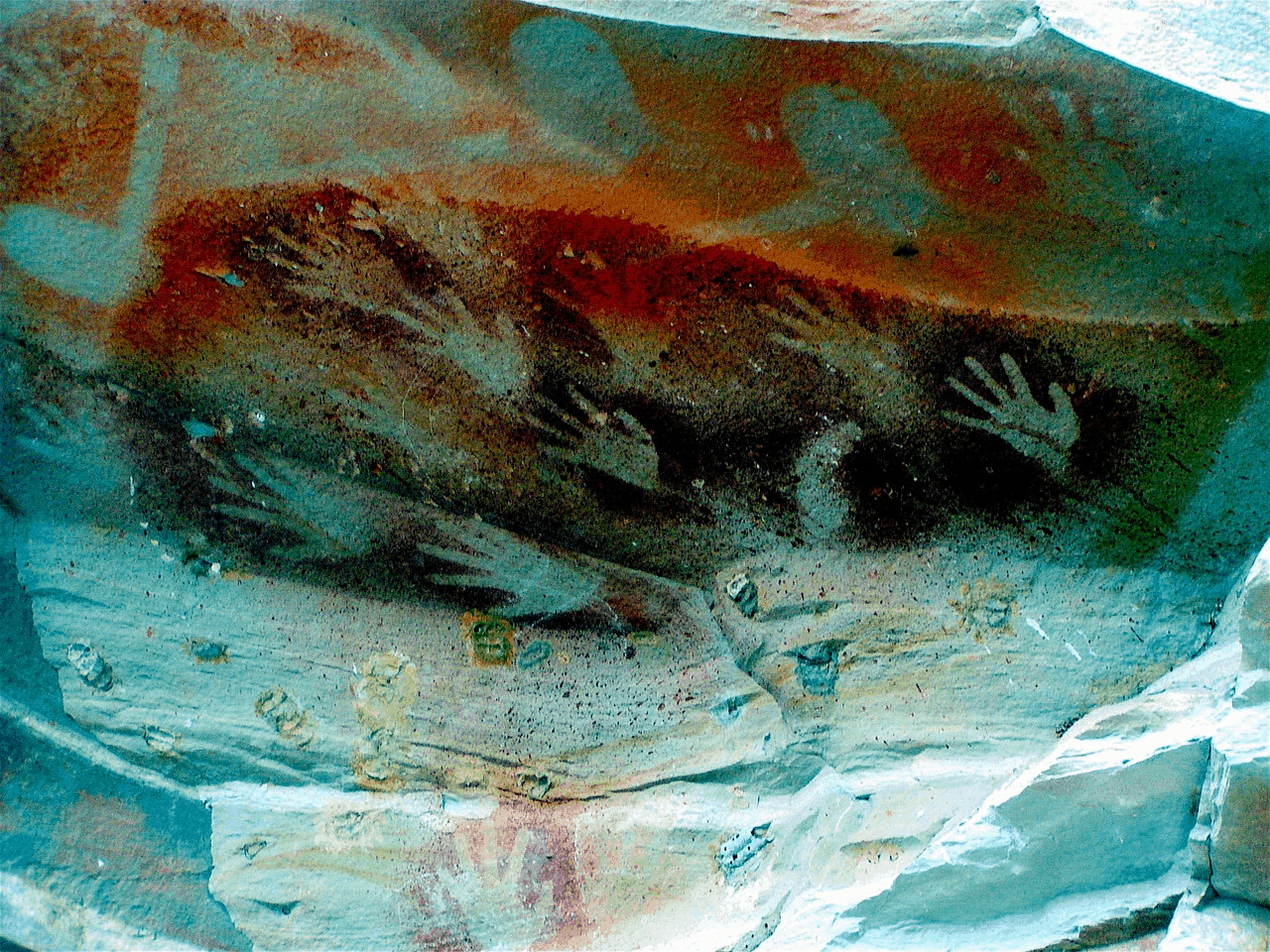
Myth: Neanderthals Were Not Creative
The Neanderthals are well known for being excellent hunters. They are also great at maintaining close social circles and taking care of their elderly and sick companions. Through archaeological discoveries, we know that the Neanderthals performed funeral rituals as well as mourned their dead.
Plenty of art has been discovered and attributed to the Neanderthals. A lot of the oldest cave paintings ever discovered have been attributed to the Neanderthals. They made their paint by mixing plants and minerals, leading to it lasting hundreds of thousands of years. The Neanderthals even used their pigments to adorn themselves with body art.

Myth: Homo Sapiens are Superior to Neanderthals
Because of the popular myths about the Neanderthals, it’s easy for people to assume that Homo sapiens are the superior species. They can assume that because the Neanderthals went extinct after a few thousand years that they would never be able to survive in the current time period. Now that we’ve learned all about the Neanderthals and how they lived, that myth is obviously not true.
We’ll never honestly know how a Neanderthal and a modern human would stack up against each other, and that’s okay. It’s good to think of Neanderthals as being our distant cousins who made many advancements. Their evolution and strength under challenging conditions laid the groundwork for modern humans to thrive. We should never think of ourselves as being better than them just because our species are different from one another.

